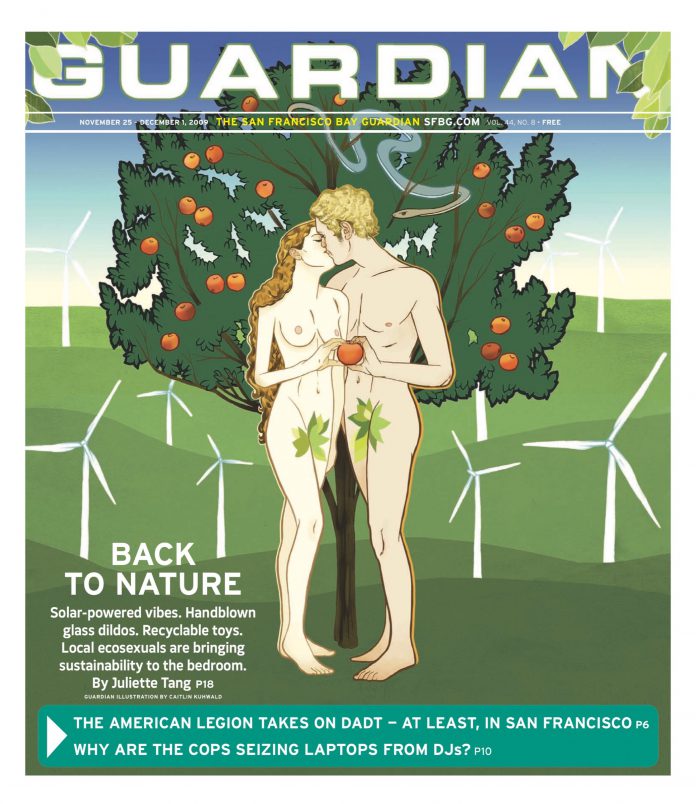paulr@sfbg.com
The migratory patterns of restaurants might not be as riveting or significant as those of birds, but they do offer their little quirks and joys. When an Oakland restaurant opens a second front across the bay, in the city — The City, our very own — one sits up and takes notice. I am talking about Noodle Theory, which is the first Oakland, or indeed East Bay, restaurant to hop across our little mare nostrum that I can think of in quite a while, or maybe ever. Since the 1989 earthquake and the realignment of regional dining habits (the city was largely cut off for a month by the Bay Bridge closure), most of the traffic has gone the other way — city restaurants opening in the suburbs, where increasing numbers of diners are. (Also Chronicle subscribers; do we detect a pattern here?) In this sense, Noodle Theory is a kind of reverse commuter.
With a name like Noodle Theory, you would expect … noodles, and lots of them, and Noodle Theory delivers. Executive chef (and owner) Louis Kao’s menu is a brief primer on the noodles of east Asia, including soba, udon, and ramen. (Noodles, as it happens, are an ancient presence in east Asian cuisine, although it’s apparently a myth that Marco Polo introduced them to Italy.) But the food extends beyond noodles, and many of the noodly dishes display a worldly sophistication that transcends memories of those packs of instant ramen so many of us subsisted on as undergraduates.
The look of the restaurant suggests the basic Asian, even Japanese, tendency of things. (The space’s previous occupant was, in a small irony, a Thai restaurant.) The long, deep dining room, which includes the bar, is screened from the street by a pair of slatted rosewood panels that look like upright futon frames. One wall is upholstered in squares of rust-red leather, while the other consists largely of a floated sheet of iridescent green fabric. The basic effect is one of uncluttered sleekness that also manages to be slightly warm. One glance tells you that you’re somewhere in the Marina, and you’d certainly be pardoned for supposing you had ended up in a sushi bar.
The tableware, too, exudes a minimalist high style: oversized plates and bowls of white porcelain, some hemispherical, others rectangular or square. Some of this must be purely for show, but there’s also a functionality angle, since many of the dishes are complex compilations of noodles, broth, and feature ingredients, like the Szechuan-style oxtails ($13), braised in red wine and served in a deep round bowl with ramen and bok choy. I associate Szechuan style with chili heat, but there was none here, just the deep, brown, Burgundian richness of the braising liquid and tender meat on its knuckles of bone. Despite an ostensible Chinese provenance, the dish was like a cross between osso buco, beef Burgundy, and pho. And that was fine.
Less soupy were a set of pan-seared duck-breast flaps ($16) nested in a tangle of chubby wheat noodles. The noodles glistened with a thick coating of the coconut red curry sauce that is a staple in Thai cooking. The most striking quality of the sauce was its heat; despite its shy, orange-pink, nursery-room tint, it packed a real chili charge that left us smacking our lips for relief.
Many of the smaller dishes, even if noodleless, bring their own pleasures. Each table gets a complimentary dish of soy-seasoned edamame to nibble on, and as much as I love bread and butter, there’s much to be said for healthful nibble food that’s also tasty. If the edamame isn’t enough, then perhaps a bowl of dry-sautéed green beans ($6), a wealth of plump torpedoes nicely blistered and generously seasoned with ginger, garlic, and scallions. And the dinner menu offers quite sophisticated starter courses, such as tabs of grilled Hawaiian butterfish ($10), set up like a lean-to over a salad of ramen noodles and wakame (the translucent green threads of seaweed familiar to sushi lovers), with a wading pool of wasabi cream to one side.
All noodles might be starch, but at Noodle Theory, not all starch is noodles. There’s a wonderful soft bun, for instance, that serves as the basis for the chicken katsu sandwich ($10), whose guts consist of a panko-crusted filet and a purplish smear of Asian slaw. The bun was fabulous and the filet juicy-crisp, while the slaw slightly disappointed despite its rich color. But the taro-root chips on the side gave some consolation.
As for sweet starch: how about the doughnut holes ($8), a stack of a half-dozen or so beignet-like disks, dusted with sugar and ready for dipping into either butterscotch or chocolate ganache sauce? In addition to being one of the few items on the menu without a discernible Asian influence, the doughnut holes are sublime and nicely proportioned. They’re just enough for two people to share without feeling that they will soon need CPR or being so bloated that they will have to lie down on a futon to sleep it off.
NOODLE THEORY
Lunch: Mon., Wed.–Fri., 11:30 a.m.–3 p.m.;
Sat.–Sun., 11:30 a.m.–5 p.m.
Dinner: Mon., Wed.-Sat., 5–10 p.m.; Sun., 5–-9 p.m.
3242 Scott, SF
(415) 359-1238
Beer and wine
AE/MC/V
Noisy
Wheelchair accessible

